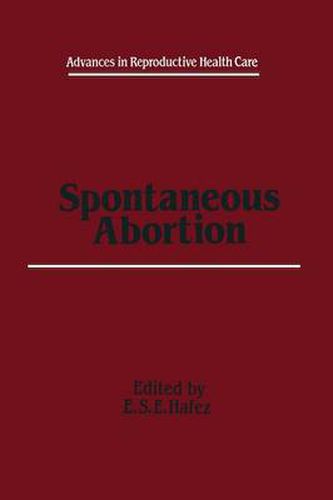Readings Newsletter
Become a Readings Member to make your shopping experience even easier.
Sign in or sign up for free!
You’re not far away from qualifying for FREE standard shipping within Australia
You’ve qualified for FREE standard shipping within Australia
The cart is loading…






This title is printed to order. This book may have been self-published. If so, we cannot guarantee the quality of the content. In the main most books will have gone through the editing process however some may not. We therefore suggest that you be aware of this before ordering this book. If in doubt check either the author or publisher’s details as we are unable to accept any returns unless they are faulty. Please contact us if you have any questions.
This series of volumes dealing with reproductive health care has as its primary objective the improvement of the quality of human reproduction. The of knowledge and new technology give us opportunities as never explosion before to accomplish this end. The Editor has brought together contributors who are outstanding scientists from around the world. A number of the authors have personally made significant contributions to our body of knowledge in reproductive medicine. Bringing all this information together in an easily readable format is a great service. This is essential reading for all concerned with the control and improvement of human reproduction and the correction of its many deficits. xv P'art I Physio-anatom-ical Parameters 1 Uterine microvasculature and spontaneous abortion M. TAKADA In the implantation and subsequent development of a fertilized ovum, its integrity is most significant. However, with maternal local factors, i.e., unsatisfactory uterine conditions, implantation may not succeed even if the integrity of the fertilized ovum is excellent; if implantation is made, the maturation of the fetoplacental unit following implantation is disturbed, which leads to abnormalities in fetal development or to miscarriage. Thus, the uteroplacental unit, as well as the fetoplacental unit, plays an important role in the establishment and maintenance of pregnancy. Among the mechanisms of the utero placental unit, most significant is the physiological mechanism of the uterine microvasculature and its correspon dence to gestation. In particular, homeostasis of simultaneous cooperative development of the uterine wall and the placenta is most important.
$9.00 standard shipping within Australia
FREE standard shipping within Australia for orders over $100.00
Express & International shipping calculated at checkout
This title is printed to order. This book may have been self-published. If so, we cannot guarantee the quality of the content. In the main most books will have gone through the editing process however some may not. We therefore suggest that you be aware of this before ordering this book. If in doubt check either the author or publisher’s details as we are unable to accept any returns unless they are faulty. Please contact us if you have any questions.
This series of volumes dealing with reproductive health care has as its primary objective the improvement of the quality of human reproduction. The of knowledge and new technology give us opportunities as never explosion before to accomplish this end. The Editor has brought together contributors who are outstanding scientists from around the world. A number of the authors have personally made significant contributions to our body of knowledge in reproductive medicine. Bringing all this information together in an easily readable format is a great service. This is essential reading for all concerned with the control and improvement of human reproduction and the correction of its many deficits. xv P'art I Physio-anatom-ical Parameters 1 Uterine microvasculature and spontaneous abortion M. TAKADA In the implantation and subsequent development of a fertilized ovum, its integrity is most significant. However, with maternal local factors, i.e., unsatisfactory uterine conditions, implantation may not succeed even if the integrity of the fertilized ovum is excellent; if implantation is made, the maturation of the fetoplacental unit following implantation is disturbed, which leads to abnormalities in fetal development or to miscarriage. Thus, the uteroplacental unit, as well as the fetoplacental unit, plays an important role in the establishment and maintenance of pregnancy. Among the mechanisms of the utero placental unit, most significant is the physiological mechanism of the uterine microvasculature and its correspon dence to gestation. In particular, homeostasis of simultaneous cooperative development of the uterine wall and the placenta is most important.